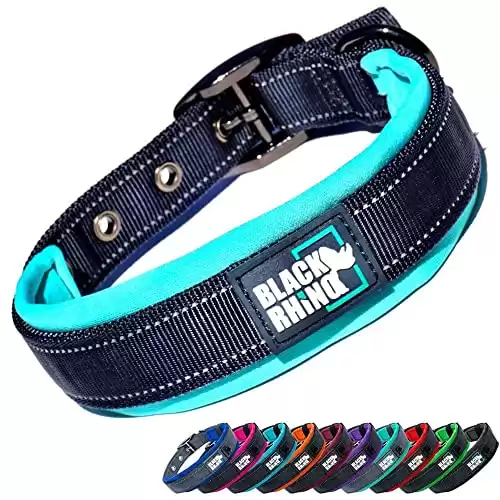Owning a dog comes with many responsibilities. It isn’t just about feeding it healthy and organic food and taking it to the veterinarian for vaccinations. It’s more than taking it for walks every day and ensuring that it is physically and emotionally healthy. Dogs may also require microchipping, wherein a tiny device is implanted underneath the dog’s skin to give off radio signals that tell the microchipping agency where your dog is if it gets lost.
Even if your dog never leaves your side or wanders, a microchip is a good idea. In the event of a car accident, many dogs become very frightened and run off. A microchip can help your your friend get home or get the medical he may need after an accident. They are also useful in the event you dog is stolen as they provide proof of ownership.
These microchips have reunited families who thought they had lost their furry friends forever. They help dogs find their way back instead of languishing in the streets and being euthanized in the future because they become stray dogs. But, how much does microchipping dogs cost? What are the benefits? Is it a worthy investment? You can learn more about microchipping your dogs here.
- Beyond Organic non-GMO dog food pate with free-range chicken
- No prohibited synthetic pesticides or fertilizers
- Added vitamins and minerals and with no artificial colors, flavors or preservatives
- No corn, wheat, soy or poultry by-product meal
What Are Dog Microchips?
The microchip itself is as tiny as a grain of rice. The chip contains a glass receptacle that sends radio signals to help veterinarians and microchipping agencies find your dog if it ever gets lost. The activated microchip has a unique identification number once a scanner passes over it. Veterinarians, animal shelters, and animal control staff have access to these scanners to help identify lost dogs on the streets.
The common misconception about microchip is that it acts as a GPS (global positioning system). It will not help you find your dog if it gets lost. It does not work like the “Find my Phone” feature on your smartphone.
Instead, the microchip is a transponder. Someone has to find the dog and scan it for the chip. Its function is to transmit the unique ID number of the microchip to the animal shelter, veterinarian, or animal control officer. Once the staff gets this number, they must call the microchip’s registry. The registry will contact the ID number’s owner to inform them about the dog’s whereabouts.
•Sturdy and comfortable
•Variety of colors, ranging XS-L sizes
•All dog breeds
How Are the Microchips Inserted in Dogs?
The phrase “insert underneath the skin” sounds ominous but it is not unpleasant. Microchipping your dog is an uncomplicated procedure. A trained professional is the one who should do the microchipping. The professional has to use a large-bore needle that will implant the microchip between the dog’s shoulder blades.
Does the dog need anesthesia? Microchipping is just like any other immunization. It is less painful than other means of identification. Branding, tagging, and tattooing are painful ways to identify your dogs.
The only time you can have the chip inserted while they are under anesthesia is when they get spayed or neutered. You can ask the vet to do the microchip procedure simultaneously. This will save you time, money, and effort.
Dogs barely feel the implantation. It feels the same as when they get their blood drawn. There’s a slight pinch or discomfort, but nothing that will cause them too much pain. It is painless and safe. The worst that can happen to your dog when they get microchipped is for the chip to move to a different area in your dog’s body. This will not harm them in any way.
There have been some cases of swelling, infection, and hair loss at the implantation site. Some owners also said their dogs had tumors because of the microchip. According to the American Veterinary Medical Association, there had only been four cases of tumors forming at the implantation sites out of some four million dogs who had the microchip. It is a risk that any wise dog owner should take.
How Much Does Microchipping Cost?
Microchipping your dog can cost as little as $10 to $50. How much you will spend depends on where you have it done. If you take your dog to the veterinarian, you usually have to pay between $40 and $50 because you have to pay for the chip and the implantation. The registration of the unique ID usually comes for free.
At times, the veterinarian will waive the implantation fee. This usually happens when you go to the vet for another reason, like a rabies shot. It is prudent to have the microchip implanted at the same time as your regular vet visit. This will save you at least $10 to $20.
However, if you want to save on the cost of microchipping your dog, watch out for animal shelters and rescue groups that usually do it for $10. There are also special clinics that do it for a fraction of what vets do it for.
• Organic dog food made with superfoods
• Free from artificial ingredients
• Multiple flavor and sizing options
• USDA Approved
Where Should You Get Your Dogs Microchipped?
Most people bring their dogs to the vet to get them microchipped. However, this is more expensive than simply bringing them to the rescue centers, which sometimes offer microchipping for half of what a veterinarian will charge. Also, pet stores with grooming and veterinary services can provide microchipping too.
If you are adopting a dog, it is better to ask if it has a microchip. If the shelter has no idea, have them scan the dog first so you can contact the owner. Only if the owner cannot be contacted should you proceed with adopting a rescue animal. Also, if there’s an existing microchip embedded in the dog, don’t forget to call the manufacturer to change the contact information in the registry.
What Are the Benefits of Microchipping Your Dog?
The number one benefit of microchipping your dog is the huge possibility of reuniting with them if they get lost. The American Kennel Club said that microchipped dogs are 20 times more likely to reunite with their owners if they have a microchip. The chip will tell animal shelter staff the ID of your dog. This ID has your contact information on the registry. You can pick up your dog from the shelter in no time.
Another benefit of having your dogs microchipped is the prevention of overcrowding in animal shelters. Every year, up to eight million animals end up in shelters. Unfortunately, once you lose your dogs, you only have about a 15% to 20% chance of finding them. Most of them end up in shelters either for adoption or eventual euthanasia. Having them microchipped is one of the surest ways to reunite with them if they get lost.
The microchip can last inside your dogs for more than 25 years. This means they won’t need to undergo the procedure again once they are microchipped. Microchips are permanent, unlike collars.
•2 collar styles and a leash
•Stylish plaid fabric
•Comfortable and affordable
Does a Microchip Replace IDs, Tags, and Collars?
While a microchip is a permanent identification of a lost dog, there is nothing easier to access than a dog’s collar. If your dog gets lost, anyone who sees it can quickly contact you by just looking at the tag or collar. However, make sure that your contact information on the collar or ID has been updated.
If the collar gets lost, the only resort for people is to take the dogs to the animal shelter and have them checked for microchips. That will take more time, but it’s a permanent way for your dog to get back to you eventually. But remember that the collars, IDs, and microchips are all important factors to get your dogs safely home again.
How Should You “Maintain” the Microchip?
You don’t need to do much to “maintain” the microchip inside your dog. The first thing you must do is to ensure that it is registered. Next, ask the veterinarian to scan the microchip once every year to make sure it is still functioning and that the contact details there are updated. Lastly, do not ever forget to update the information in the manufacturer’s database if you decide to change your phone or move to another address.
Can All Scanners Pick Up the Information from the Microchip?
Not all scanners can pick up the information from the microchip. There are universal scanners, but not all are the same. Some work better than others. Not all shelters have access to universal scanners to check every stray animal they get from the street.
But scanners also depend on knowing where the chip is located. Over time, the chip can get dislocated and move to another part of the dog’s body. Workers in the animal shelters don’t usually have the time to scan every area of the dog’s body, so some remain unscanned even if they have microchips embedded in them.
One of the things that dog owners can do is ask the vet to locate where the chip is every time you visit. You can put that information on the dog’s collar. This way, if they get lost, the animal shelter or clinic knows where to scan first.
•Designed by veterinarians
•No pull technology
•Variety of colors & sizes
Conclusion
Nothing is more painful than losing your furry friend, and perhaps nothing is more heartbreaking than knowing they are out there wondering if they’ll ever see you again. The best thing you can do to prevent being apart from them for so long is to have them microchipped. At best, this ensures that there is always an opportunity that someone will scan them and send the information to the registry. Thousands of dogs get lost every year due to various reasons. Don’t let your dogs be part of statistics.
Up Next…
- What to Do if You Find a Lost Cat microchips are useful if you are the one to find a lost animal. Learn more about it here.
- The Best Dog GPS Trackers: Reviewed for 2022 There are also GPS trackers for your dog so you can always find him. Click here to learn more.
- The Best Cat GPS Trackers for 2022—Reviewed and Ranked GPS and microchipping aren’t just for dogs, they are great for cats as well.
The photo featured at the top of this post is © iStock.com/Fly_dragonfly
Ready to discover the top 10 cutest dog breeds in the entire world?
How about the fastest dogs, the largest dogs and those that are -- quite frankly -- just the kindest dogs on the planet? Each day, AZ Animals sends out lists just like this to our thousands of email subscribers. And the best part? It's FREE. Join today by entering your email below.
Thank you for reading! Have some feedback for us? Contact the AZ Animals editorial team.











